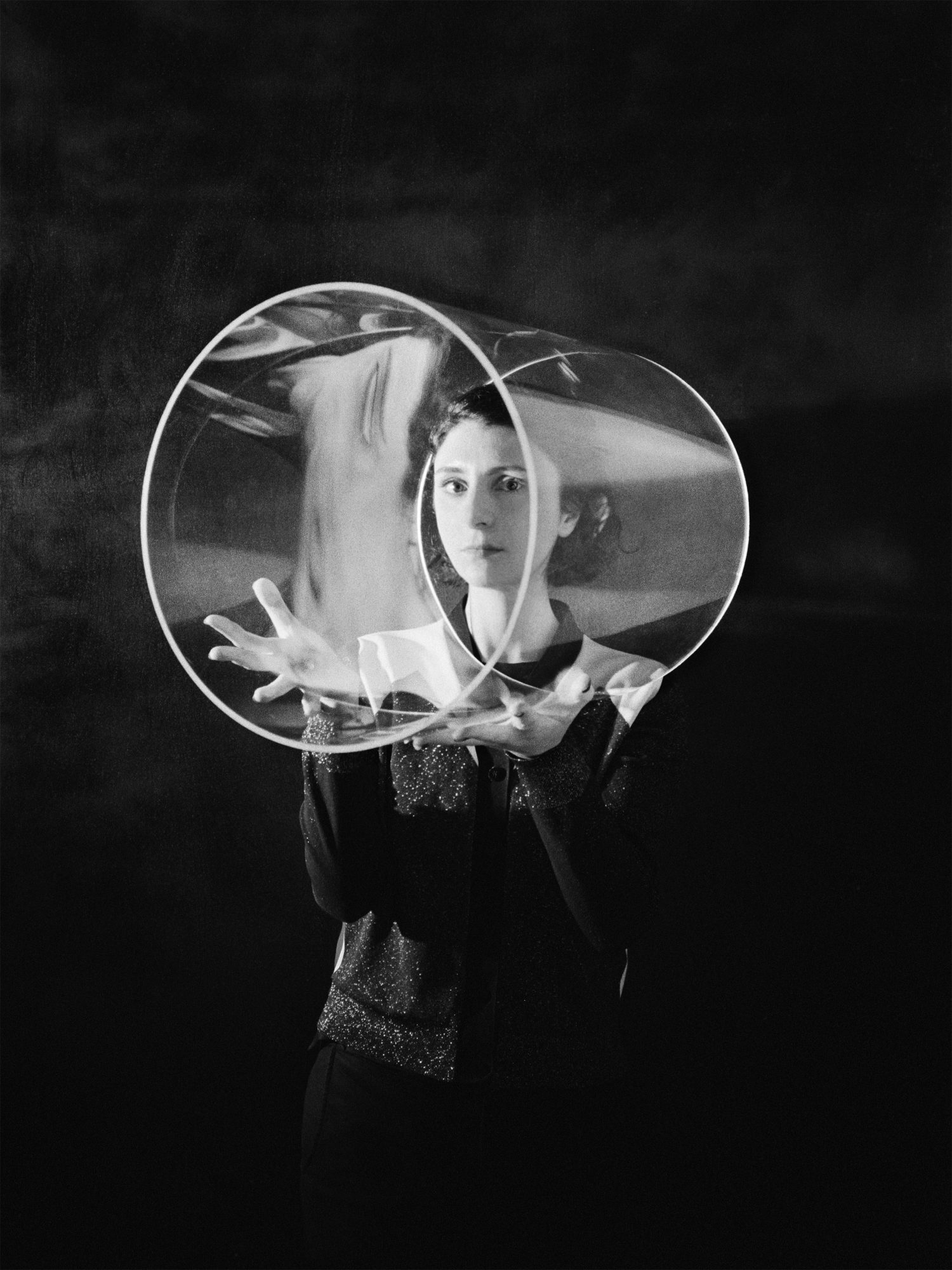
Marguerite Humeau’s breakout show at the Palais de Tokyo in 2016 jumpstarted the young Design Academy Eindhoven graduate’s career. The London-based artist has maintained her momentum by producing works that leverage her skills as a researcher and fabricator against her wild imagination. This summer she erected a winged sphinx on the High Line in New York with the blessing of curator Cecilia Alemani, which played off her spooky solo show at Clearing gallery in Brooklyn examining the parallels between the mythological beast and contemporary security protocols.
Ahead of a solo presentation at Tate Britain and an installation in the gardens of Versailles, we caught up with Humeau—and her peer Julian Charrière— to talk about her excavations of the future.
Kat Herriman: You refer to Julian Charrière as your male artist alter ego. What do you think your work draws out in one another?

Marguerite Humeau: We were introduced to each other by a dear friend of ours, curator Nadim Samman. Nadim told me that he had to introduce me to my male alter ego, Julian. This happened for the first time in 2015, when we were both setting up our works for the group show “Rare Earth,” curated by Nadim and Boris Ondreiˇcka at TBA21 in Vienna. The show dealt with artists and researchers exploring the spiritual, social and economic implications of our profound contemporary engagements with rare earth—which is a class of 17 elements in the periodic table that are used in many digital imaging technologies, defense and energy sectors. The idea was to also highlight how the seemingly digital worlds that we are creating rely heavily on rare-earth resources. In this show, many of the artists had the common obsession to go on quests to excavate data and evidence—fossils and resources, materials, crystals. That was the background for my meeting with Julian. We had a “friendship coup de foudre” and have remained close ever since.
I think we have a similar attitude towards work, as we go on epic quests that can put us in difficult situations. We also both operate across various fields and disciplines. We get involved in intensive periods of research and collaboration with experts. I would say that we explore in different ways. We create supernatural installations in which the deep past and far future collide. We revive and reenact worlds that are lost, and try to understand the implications for the present and the future.

Julian Charrière: Not much to add, but within both our practices, the actual work one encounters in a gallery space can be seen as the tip of an iceberg supported by complexities uncovered through our research. The pieces are what we can actually bring into the physical realm are based on a deep exploration, a sort of drill-core sampling throughout a wide range of fields.
KH: How does representation and abstraction function in your work? How do they interact?
MH: I am trying to explore what life is and/or could be. How figurative can it be, and how abstract? How minimal can a presence be? Can it be immaterial, a voice, the sound of wind in the leaves of a plant? JC: Most of the subjects I’m dealing with are inherently abstract: the sensitivity of radioactivity, the nonlinearity of time, the non-human perspective. My aim is to dig into these strange immaterial monsters, bring to the surface some aspect which I can then transpose into an object existing within the tangible world, something with a certain haptic quality, something easier to grasp.
KH: You both often work from the past to create works that feel futuristic. How do you see time operating in your work?
MH: It comes through in our strategies to reenact or resuscitate worlds, ecosystems, beings that have existed but are extinct, like in my work, The Opera of Prehistoric Creatures, or that could have existed, like my Palais de Tokyo work, FOXP2.

JC: Neither of us are actually working from the past, but rather include a certain amount of historical framework in our narrative, linking the works to a larger history. As our work draws from the past while projecting itself into the future, those two places bridge together in multiple dimensions, stressing the common idea of a linear narrative. This timeless aspect is crucial to our projects, even if at the end they still participate in the discourse of the present. KH: How does your installation at Versailles fit into your latest body of work?
MH: The story starts when I made the first hypothesis that sphinxes might be the direct biological ancestors to security protocol today. I have been on a quest to excavate the origins of the creature. The sphinx is a hybrid of the man-eating animals—lions and vultures—with a face of a human. It is a figure that has protected humans, throughout history and in civilizations around the world. In Greek mythology the sphinx devours humans who are not able to answer its riddle. No research has been done so far, so I had to invent my own speculations on its origins by working with archeologists, researchers and comparative mythology experts. I made the hypothesis that the first humans, at a time when humankind was not dominant on Earth, created a hybrid of their worst predators as a way to protect themselves. This hybrid is their protecting god. Therefore, the sphinx protects as much as it devours. In the show in New York, I imagined that the sphinx originated in the world’s first war. I corresponded with the archeologists who researched Site 117—the earliest known mass cemetery and evidence of war, approximately 13,000 years old. This time I made a different speculation: I imagined that the sphinx might have originated much earlier, when humans where not the most dominant species on Earth.



